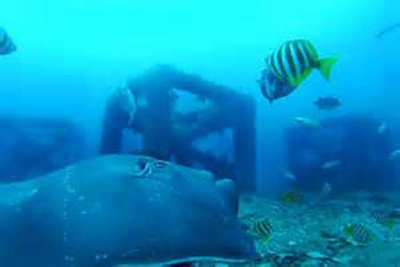
Scientists at China's Anhui Jianzhu University created a coral that proved to be 2.7 percent more effective at adsorbing mercury as previous forms of nano-size aluminum oxide in lab experiments.

Taking their inspiration from nature, scientists at China's Anhui Jianzhu University created a coral from nanoparticles of aluminum oxide, a material frequently used for mercury cleanup. In lab experiments, the nanotech coral proved to be 2.7 percent more effective at adsorbing mercury as previous forms of nano-size aluminum oxide.
What is adsorption, and how does it differ from absorption? When a toxin is adsorbed, it adheres to a surface, creating a film, rather than being sucked up or dissolved by the adsorbent. As lead author Xianbiao Wang put it: "Adsorption is an easy way to remove pollutants from water, so developing new products that can do this is a big challenge in environmental remediation."
For years, scientists have been working on using aluminum oxide nanoparticles to remove heavy metals and other toxins from water but have struggled to find the most practical method.
"The chemical and physical structure of such products is very important," said Wang. "The way forward is to design and fabricate adsorbents with different structures to see how they behave."
The new material is a breakthrough in more ways than one. Not only does the nanotech aluminum oxide material curl into coral-like shapes, but it's relatively easy to manufacture, Wang said.
The artificial coral removed more than 20 micrograms of mercury from a gram of water; extrapolate that, and it's far more effective than most solutions being used. While scientists may be many years away from deploying human-made coral reefs made of aluminum oxide, the experiment is a big step closer to a practical way to clean the oceans of toxic mercury.
Other scientists are taking different approaches, according to an analysis presented at the 6th International Perspective on Water Resources & the Environment conference. In one prize-winning Australian project, researchers pioneered a Lego-like approach to assembling artificial coral reefs. Other pilot projects have tested the use of aluminum oxides to remediate rivers and other waterways polluted with mercury.
Wang said he's particularly excited about his results because they provide a model for other scientists seeking to take their inspiration from nature.
"Materials that mimic biological adsorbents like coral have potentially huge applications," said Wang, whose research was published in the Journal of Colloid and Interface Science. "We hope our work provides inspiration for further investigation."